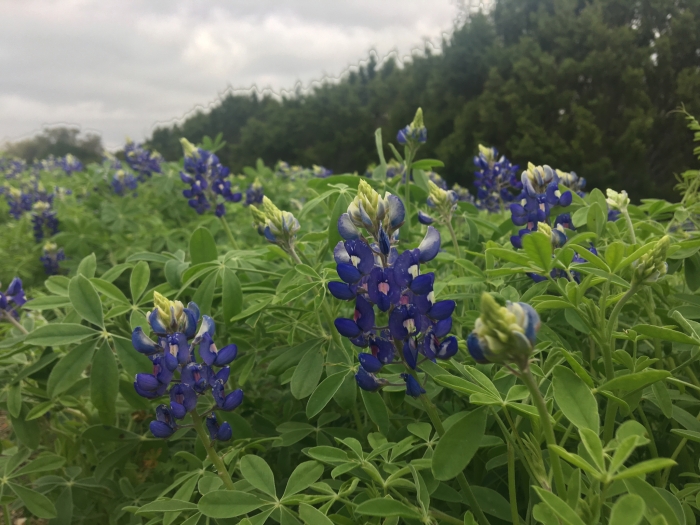Texas Bluebonnet
(Lupinus texensis)
Texas Bluebonnet (Lupinus texensis)
/
/

William Garner
Public Domain
Image By:
William Garner
Recorded By:
Copyright:
Public Domain
Copyright Notice:
Photo by: William Garner | License Type: Public Domain | License URL: http://creativecommons.org/publicdomain/zero/1.0/ | Rights Holder: William Garner | Publisher: iNaturalist | Date Created: 2017-03-17T14:36:05Z |


















































Estimated Native Range
Summary
Lupinus texensis, commonly known as Texas Bluebonnet, is an annual herb native to prairies and open woodlands in Texas and Louisiana, and Mexico. The Texas Bluebonnet is celebrated for its vibrant blue flowers, which are especially showy in the spring when they form dense, spectacular displays. It typically grows between 20 to 50 centimeters tall and features a plume of blue flowers, often with a white tip and occasionally a hint of pinkish-red. The flowers’ scent varies, with some individuals detecting no fragrance and others describing it as faintly sweet. The plant’s foliage is palmate and green, forming a rosette at the base.
Texas Bluebonnets are valued for their drought tolerance and ability to thrive in challenging environments, making them ideal for xeriscaping and wildflower meadows. They are also used for roadside plantings and as a naturalizing species in informal garden settings. These plants prefer well-drained soils and require full sun exposure to flourish. While they are generally low-maintenance, they can be difficult to establish from seed due to their hard seed coat, which requires scarification to germinate effectively. Once established, they can reseed and naturalize in suitable conditions.CC BY-SA 4.0
Texas Bluebonnets are valued for their drought tolerance and ability to thrive in challenging environments, making them ideal for xeriscaping and wildflower meadows. They are also used for roadside plantings and as a naturalizing species in informal garden settings. These plants prefer well-drained soils and require full sun exposure to flourish. While they are generally low-maintenance, they can be difficult to establish from seed due to their hard seed coat, which requires scarification to germinate effectively. Once established, they can reseed and naturalize in suitable conditions.CC BY-SA 4.0
Plant Description
- Plant Type: Herb
- Height: 1-3 feet
- Width: 1-2 feet
- Growth Rate: Rapid
- Flower Color: Blue, Purple, White
- Flowering Season: Spring
- Leaf Retention:
Growth Requirements
- Sun: Full Sun
- Water: Low
- Drainage: Medium
Common Uses
Bee Garden, Bird Garden, Butterfly Garden, Deer Resistant, Drought Tolerant, Fragrant, Groundcover, Hummingbird Garden, Low Maintenance, Potted Plant, Rabbit Resistant, Showy Flowers
Natural Habitat
Native to prairies and open woodlands in Texas and Louisiana
Other Names
Common Names: Texas Bluebonnet , Texaslupin
Scientific Names: Lupinus texensis , Lupinus leonensis , Lupinus texensis f. albus
GBIF Accepted Name: Lupinus texensis Hook.